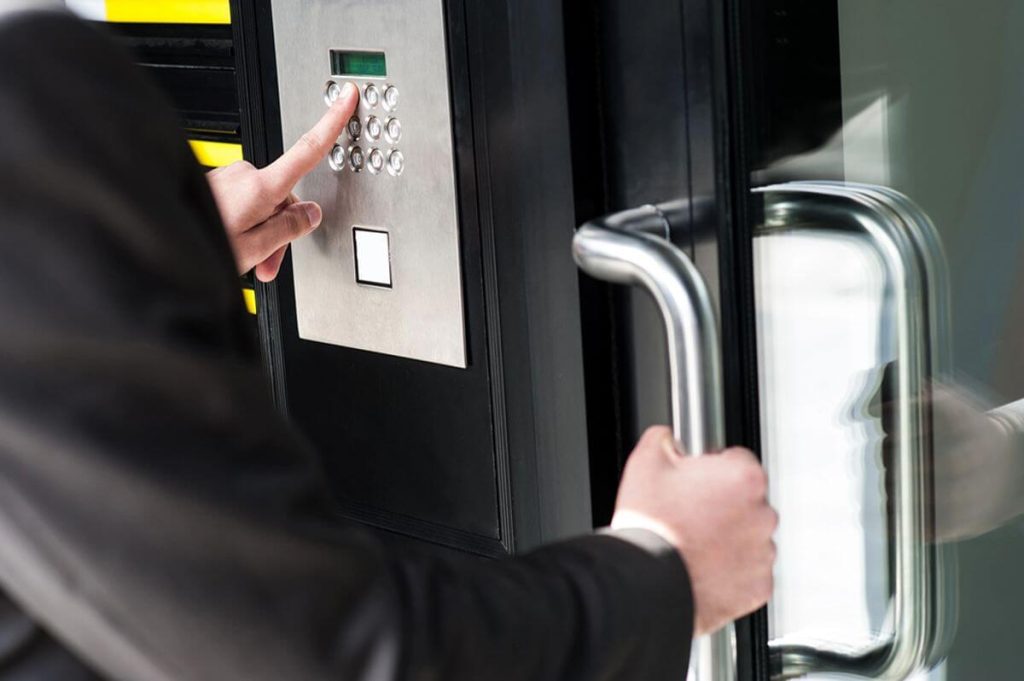What common issues can door access systems in the Philippines solve?
- Unauthorized entry and security breaches
- Difficulty managing employee access
- Lack of entry and exit tracking
- Outdated key systems
- Limited control during emergencies
Overview
- Door access systems in the Philippines address key security challenges, including unauthorized entry, inadequate access tracking, outdated key usage, and emergency response delays.
- ELID offers tailored solutions like WinPro2 and Matrix V, helping institutions manage access efficiently, ensure accountability, and enhance safety across various industries with modern, flexible control systems.
Building access control in the Philippines has evolved from a basic operational task to a critical component of safety and regulatory compliance. With increasing occupancy and stricter standards, traditional methods are no longer sufficient to address modern security requirements.
This shift underscores the need for intelligent access solutions. There are common problems with door access systems in the Philippines that can be fixed, including unauthorized entry, inefficient monitoring, and poor scalability. ELID addresses these issues with advanced, locally adaptable platforms designed to meet the specific demands of Philippine facilities.
Discover how these challenges can be resolved and why modern access control is now a necessity, not an option.
Unauthorized Entry and Security Breaches
Many institutions in the Philippines still rely on mechanical locks, logbooks, and outdated ID checks. These methods lack accuracy and control, making it easy for unauthorized individuals to access restricted areas or misuse borrowed keys.
For example, a hospital supply room may store hazardous substances or costly equipment. Without proper tracking, these assets are vulnerable. Door access systems solve this by assigning unique digital credentials—like PINs or biometrics—to each staff member, ensuring secure and accountable access.
Difficulty Managing Employee Access
ELID’s WinPro2 provides management teams with user-friendly access control software that manages security anywhere on-site. With time and attendance analysis alongside visitor management functions, employers can efficiently keep track of their staff’s time-in and time-out logs while ensuring access to certain premises in the office is given only to those who have permission to enter.
Managing access for rotating shifts, outsourced staff, and new hires is a constant challenge in the Philippines, especially in companies with high turnover. Revoking access for former employees and granting permissions to new ones can be slow and inefficient without a door access system, often causing delays and disruptions to daily operations.
Lack of Entry and Exit Tracking
Missing files, lost equipment, and incomplete documents often lead to time-consuming investigations just to identify who last accessed a room. Without reliable access logs, accountability becomes nearly impossible. This lack of visibility is common in the Philippines, where many facilities still rely on manual logbooks or guard checklists.
This is where door access systems, like ELID’s Matrix V, become essential in any facility. It automatically records every entry attempt, all of which are timestamped and linked to a specific user ID. Take, for example, a school that has a room full of student records. With Matrix V, administrators not only control who enters the room, but they can also generate a report of all access attempts within a given time frame. This gives investigations solid support and ensures full accountability across all departments.
Outdated Key Systems
Is your company still relying on physical keys? If so, how often have you dealt with jammed locks or misplaced keys? It is common for team leads to carry duplicates and for management to store a complete set in one location, often passed around from person to person. This setup can cause delays and create significant security risks.
Traditional key systems lack access logs and have no built-in fail-safes. If a master key is lost or stolen, the entire building becomes exposed to unauthorized entry. In contrast, modern door access systems use digital credentials that can be deactivated remotely at the first sign of a threat. Solutions like smart handle locks offer flexible upgrades, allowing companies to gradually move away from physical keys and adopt more secure, reliable technologies.
Limited Control During Emergencies
The Philippines regularly faces earthquakes and sudden fires. In such emergencies, traditional locks can delay evacuation, especially when keys are missing or exits are locked. This not only traps people inside but also causes panic and chaos, making an already dangerous situation even worse.
With door access technologies, administrators can remotely lock or unlock specific doors and enable emergency routes. In a corporate building, for instance, this could mean securing floors during a trespassing threat. Schools can use these systems to automatically unlock exits during earthquakes or fires. These centralized platforms speed up response times and reinforce better safety outcomes in any industry.
Key Takeaway
Modern technologies are creating new waves across industries, setting new security standards and higher expectations for safety. These common problems that door access systems in the Philippines can fix should be treated with the same care and consideration one would give to any other serious situation.
With tailored technologies by ELID, establishments can transition from traditional tried-and-tested methods to more proactive security measures. Contact us today to learn how our products can help you meet the highest level of modern safety demands.
